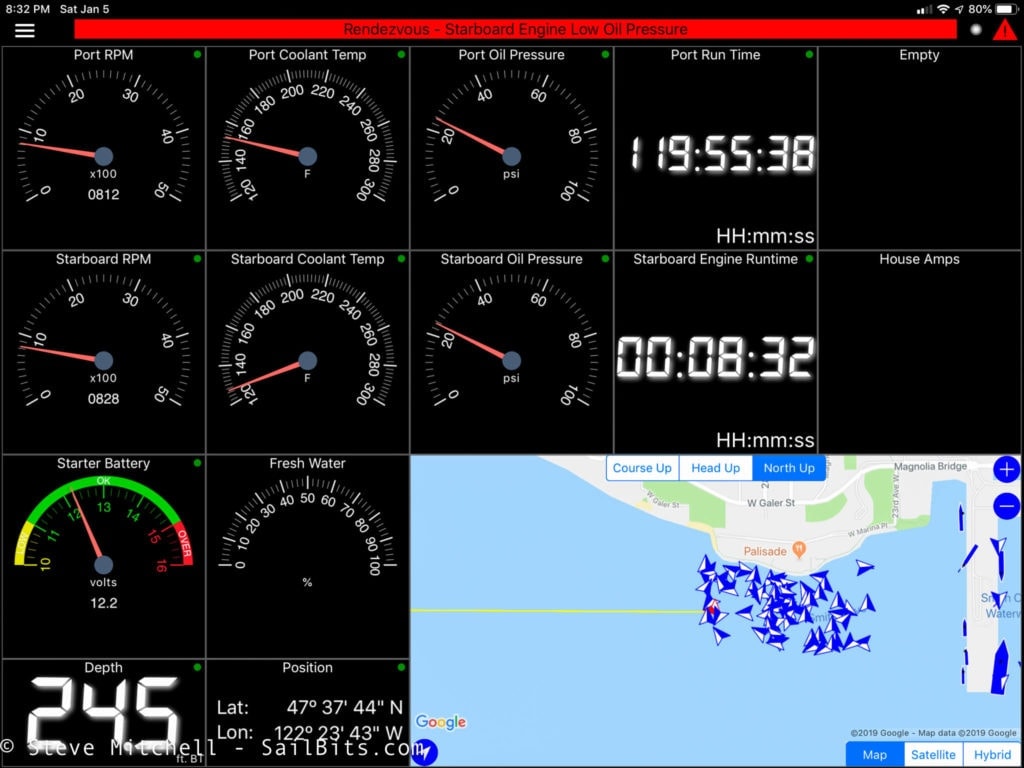

If your measurement is 120 ohms, then only one terminator is connected. Reconnect the shield after this measurement is made.Ħ) Reconnect the Power tap and next measure about 60Ω between pins 4 (White wire) and 5 (Blue wire) of all drop connectors (This action verifies that both terminators properly to the NMEA 2000 network. This measurement should be a very high resistance (OPEN). Measure the resistance between pins 1 (Bare) and 3 (Black) of a network connector. Note: The shield should be grounded at single location of the NMEA 2000 network.ĥ) Disconnect the power tap connection therefore splitting the network into two halves. Start to verify the following resistance measurements: 0Ω between pins 1 (Bare) and 3 (Black) of all NMEA 2000 drop connectors (This verifies that the shield is connected to ground). Now take a measurement for resistance turn your DVOM dial to Ω setting. Remember to keep all devices disconnected. Move to various locations of your NMEA 2000 network to test that network power is consistently 12-13.5 VDC.Ĥ) Turn off the NMEA 2000 network. Connect DVOM probes to pins 2 (Red wire) and 3 (Black wire) to confirm 12VDC shows.

Note: Technicians generally use Maretron's Field attachable connector (FA-CM-ST) to find wiring issues in NMEA 2000 systems, image shown in Figure 1.Ģ) Attach the termination resistors and connect the unpowered power tap to the NMEA 2000 network.ģ) Turn on your systems DC power supply. Do not proceed until the resistive short are removed from your cabling system. The DC negative and the bare shield wire will show a resistive value on the DVOM. If you see any resistive values or cable shorts the cabling requires further diagnosis. When the two network termination resistors are removed, and the power tap is connected. Turn off the NMEA 2000 network power, remove the two terminating resistors (120Ω)ġ) Proceed to measure each wire combinations (white/red, white/blue, blue/red, etc.) and verify that no shorted wires readings show on the DVOM.

The next few steps will require the use of a Digital Volt/Ohm Multi-Meter (DVOM). The pin assignments for NMEA 2000 Micro, Mid, and Mini size cabling is as follows:įirst, visually check the following items on your NMEA 2000 network:ġ) All connections are properly seated and secured in the NMEA 2000 network.Ģ) The NMEA 2000 network has a fused link connected to the Power Tap teeģ) (If you're using a Micro/Mid yellow power tap, verify that the +12VDC connection is the brown and white wires, and the blue, gray, and black wires are all connected to DC- or your DC Ground).Ĥ) Verify the NMEA 2000 network has two terminating 120Ω resistors connected on opposite ends of the entire network. You should always perform the following steps to ensure the cabling concerns are excluded before diagnosing detected anomalies on your operational NMEA 2000 network. The next steps will help identify potential cabling issues before component damage can occur. This article's purpose is to cover the basic diagnosis using a Digital Voltage/Ohm Meter (DVOM) to systematically check all connections of your NMEA 2000 network are trouble free. The N2KMeter is the official technician's assistant to quickly locate NMEA 2000 network issues. The N2KMeter can also provide a real-time detection of powered device communication issues such as excessive error frames, bit timing anomalies, device level bandwidth usage, and more. Maretron recommends using an N2KMeter to properly check NMEA 2000 network health when powered and devices are operational.
SETTING UP AN ALARM ON NMEA 2000 NETWORK SOFTWARE
NMEA 2000 ® data extraction software for VDR100


 0 kommentar(er)
0 kommentar(er)
